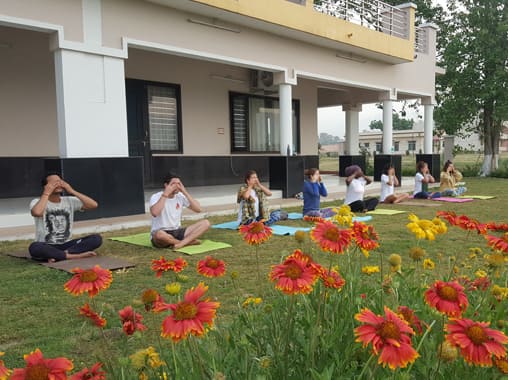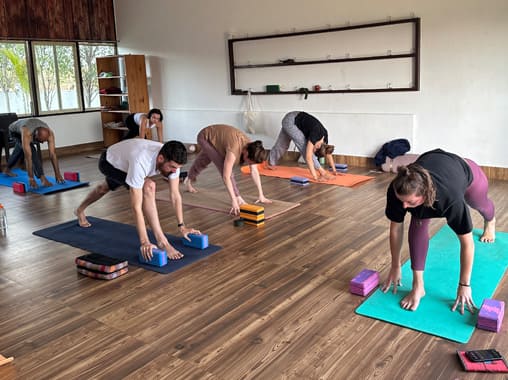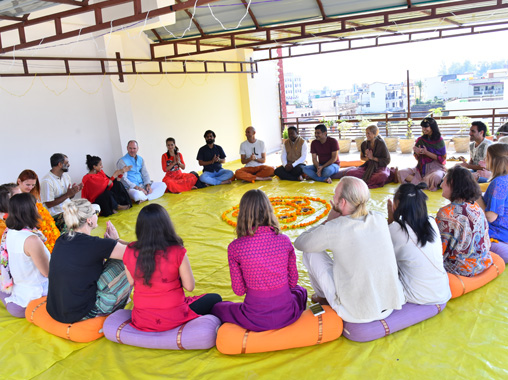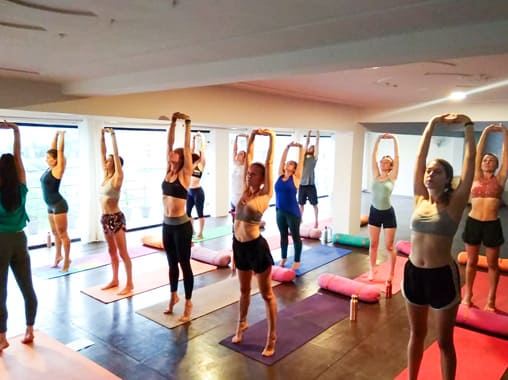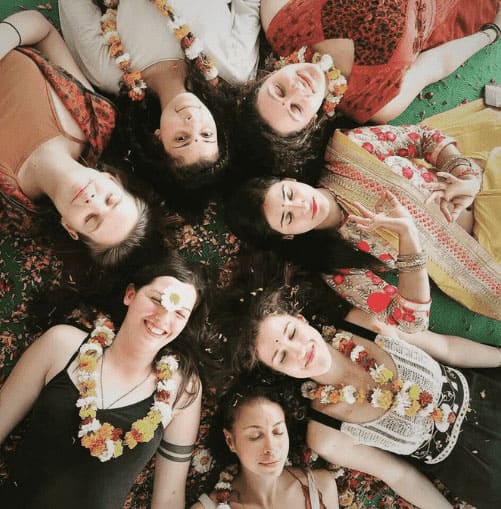What is Anxiety?
Anxiety is a normal and natural response to stress or perceived threats, and it is a common human emotion experienced by most people at some point in their lives. Anxiety is characterized by feelings of fear, worry, nervousness, and apprehension, and it can range from mild to severe. Anxiety can be triggered by a variety of factors, such as a stressful event, life changes, or chronic stress. It can also be a symptom of various mental health disorders, such as generalized anxiety disorder, panic disorder, social anxiety disorder, and phobias.
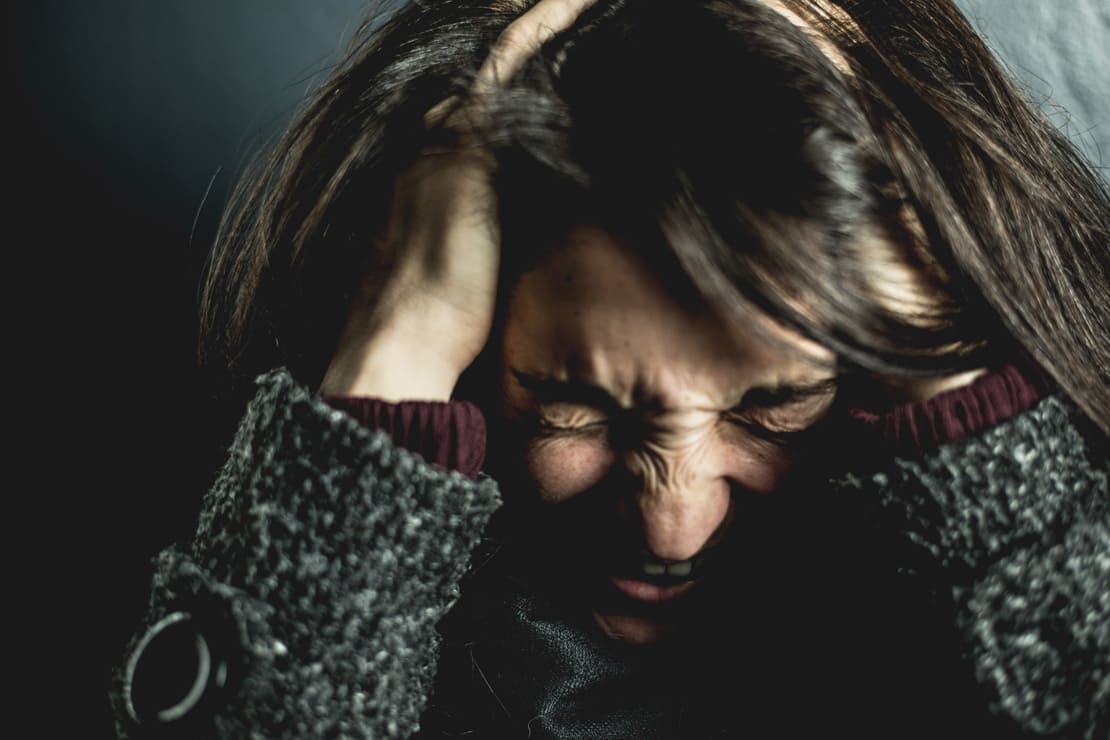
Symptoms of Anxiety
Anxiety can cause a range of physical, emotional, and behavioral symptoms, which can vary in severity and duration. Some common symptoms of anxiety include
Physical Symptoms:
- Rapid heartbeat
- Shortness of breath
- Sweating or clammy hands
- Nausea or stomach discomfort
- Trembling or shaking
- Muscle tension or aches
- Fatigue or feeling run down
- Insomnia or difficulty sleeping
Emotional Symptoms:
- Feelings of fear or dread
- Worrying excessively
- Irritability or restlessness
- Difficulty concentrating
- Feeling tense or on edge
- Panic attacks
Effective Yoga Poses for Anxiety
1. Bound Angle Yoga Pose (Baddha Konasana)
Benefits:
- Stretches the knees, groin, and inner thighs.
- Stimulates the digestive system and aids with digestion.
- It helps in easing menopause and menstrual discomfort symptoms.
- It is beneficial in easing mild anxiety, tiredness, and depression.
- It assists in enhancing hip and groin flexibility.
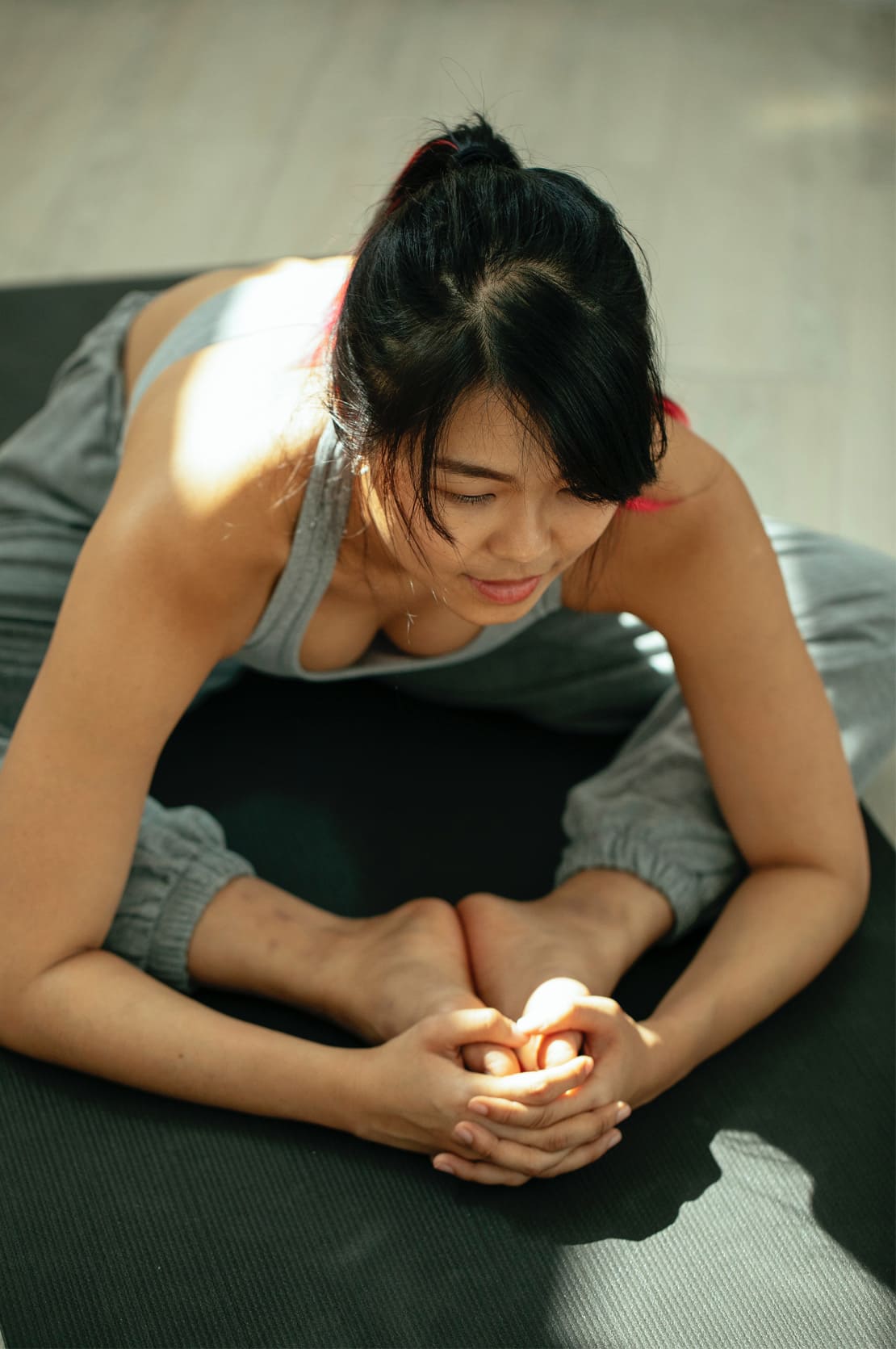
How to Perform Bound Angle Yoga Pose:
- Sit on the ground with your legs extended in front of you to start.
- Bring your feet’s soles together while bending your knees and allowing them to fall out to the sides.
- Grab your feet firmly with your hands and bring your heels as near to your pelvis as you can manage.
- Lift through the crown of your head while lengthening your spine.
- Knees can be softly lowered to the floor by using your elbows to do so.
- Maintain the position for one to five minutes while inhaling deeply.
- Straighten your legs in front of you and gently release your feet to exit the pose.
2. Bow Pose (Dhanurasana)
Benefits:
- Stretches the chest, abdomen, hip flexors, and quadriceps as well as the rest of the front body.
- Makes the erector spine, rhomboids, and trapezius muscles in the back stronger.
- Increases spinal flexibility and posture.
- Stimulates the digestive system and aids in relieving constipation.
- Reduces low back pain and discomfort during menstruation.
- Relieves anxiety and tension while calming the mind.
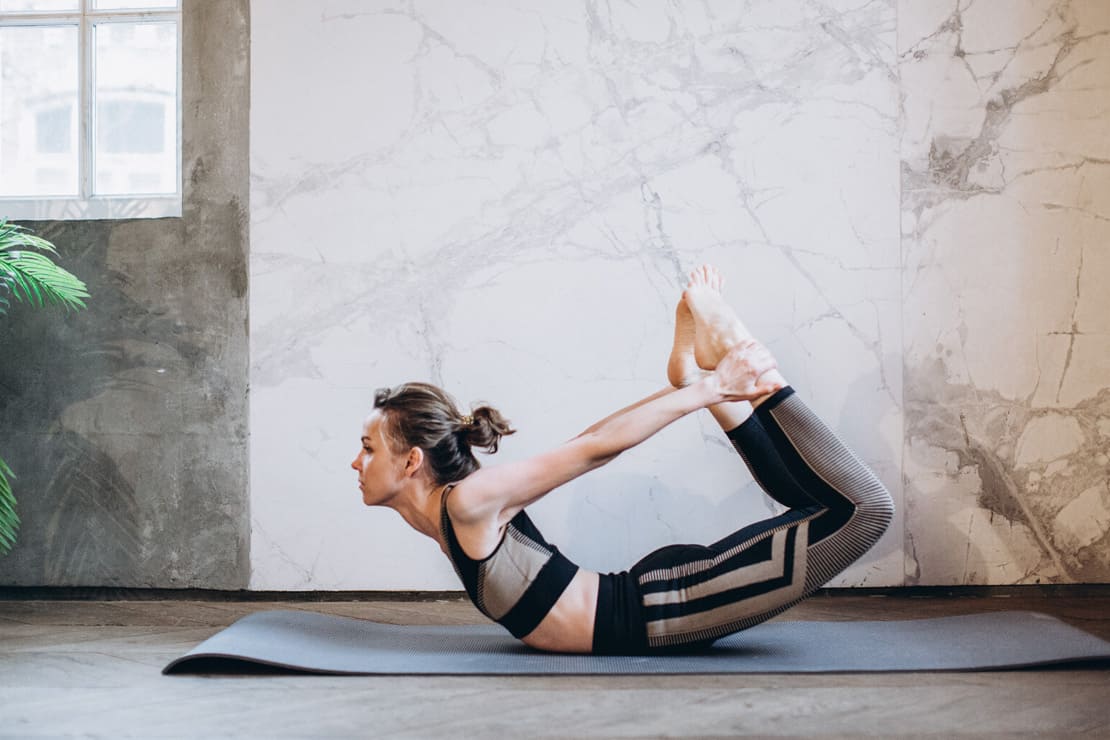
How to Perform Bow Pose:
- Lie on your stomach, feet hip-width apart, and arms by your sides.
- Bring your heels up to your buttocks while bending your knees.
- Grab your ankles with your hands as you extend your back.
- Pull your ankles towards your buttocks as you inhale and raise your legs and chest off the ground.
- Hold the position for 15 to 30 seconds while inhaling deeply while gazing forward.
- Releasing your ankles after exhaling will allow you to descend your legs and chest to the ground.
3. Bridge Pose(Setu Bandha Sarvangasana)
Benefits:
- Strengthens the legs, buttocks, and back.
- Stretches the neck, spine, and chest.
- Improves digestion and circulation.
- Reduces tension and stress.
- Enhances mental calm and general health.
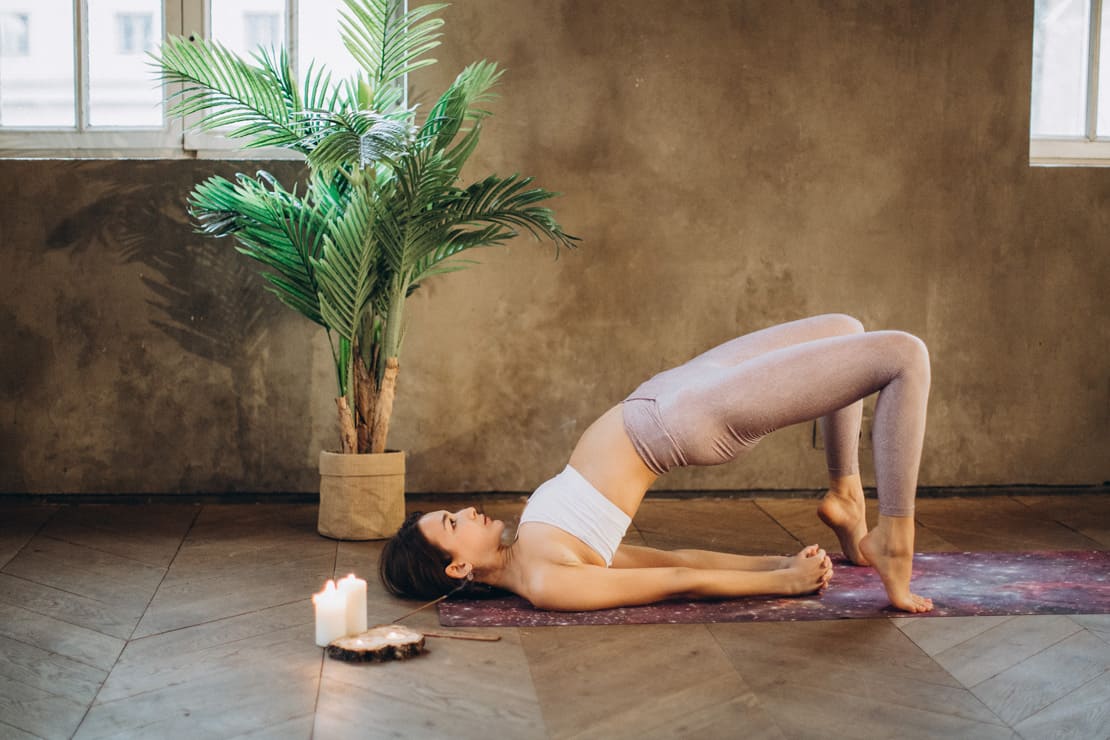
How to Perform Bow Pose:
- Lie down on your back with your arms at your sides and your knees bent, feet hip-width apart and flat on the floor.
- Inhale, and as you exhale, press your feet and arms into the floor, and lift your hips towards the ceiling, creating a diagonal line from your knees to your shoulders.
- Keep your thighs parallel to each other and your shoulders on the floor, pressing your arms into the ground to lift your chest towards your chin.
- Hold the pose for 5-10 breaths, then release by slowly lowering your hips to the ground.
4. Alternate Nostril Breathing(Nadi Shodhana)
Benefits:
- It decreases stress and anxiety by calming the mind.
- Regulates body energy and enhances general health.
- Improves respiratory health and lowers the likelihood of respiratory problems.
- Reduces the risk of heart disease and helps to lower blood pressure.
- Improves clarity of thought, attention, and concentration.
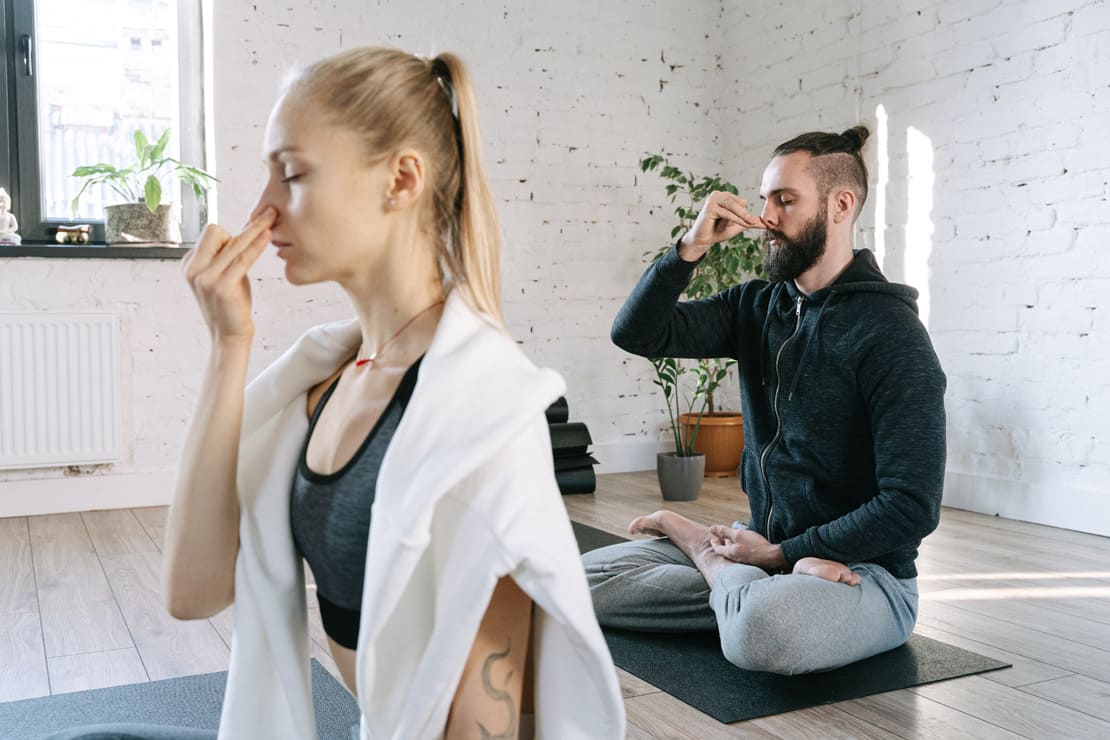
How to Perform Alternate Nostril Breathing:
- Close your eyes and choose a comfortable sitting position. Bring your right hand up to your face while placing your left hand on your left knee with the palm facing up.
- Deeply inhale through your left nose while placing your right thumb over your right nostril. After that, release your right thumb from your right nostril and exhale through your right nose while keeping your left nostril closed with your right ring finger. This pranayama exercise helps regulate your breath and calm the mind.
- Breathe deeply through your right nostril, then squeeze it shut with your thumb. Then, let go of your left nose with your ring finger on your right hand, and let out your breath through your left nostril. Continue this alternate nostril breathing, or Nadi Shodhana pranayama, for a few rounds to promote balance and relaxation in the body and mind.
5. Leg up the Wall Pose(Viparita Karani)
Benefits:
- It helps in relieving stress and anxiety.
- Improves blood circulation.
- Eases tension in the lower back and hips.
- Stimulate the digestive organs and promote better digestion.
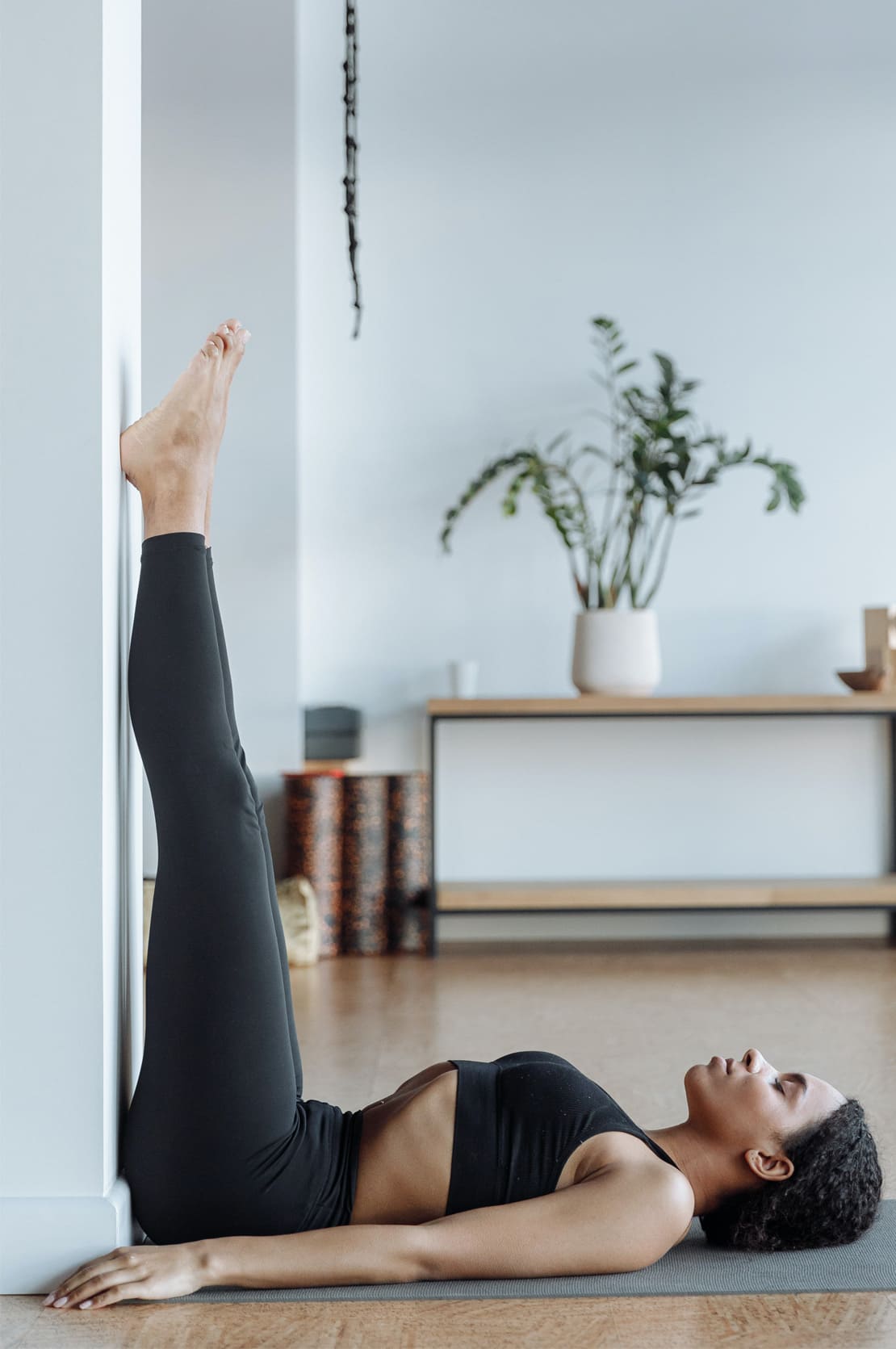
How to perform the Leg up the Wall Pose:
- Lie back down and swing your legs up the wall until your sitting bones are as near to the wall as possible and your heels are resting against the wall. Your body should be positioned in an L form with your legs straight up.
- For a more calming impact, place your hands on your belly or heart center while keeping your arms at your sides with your palms facing up.
- Breathe deeply and close your eyes to calm down your entire body. Hold the position for five to ten minutes, or as long feels comfortable.
Conclusion
In conclusion, Yoga postures for anxiety come in a variety. Since the majority of practices involve meditation, which brings your thoughts and feelings into consciousness, these postures serve to promote overall health and well-being, including increasing immunity, decreasing food cravings, and even reducing stress. The key to de-stressing is learning how to concentrate and relax the mind.

